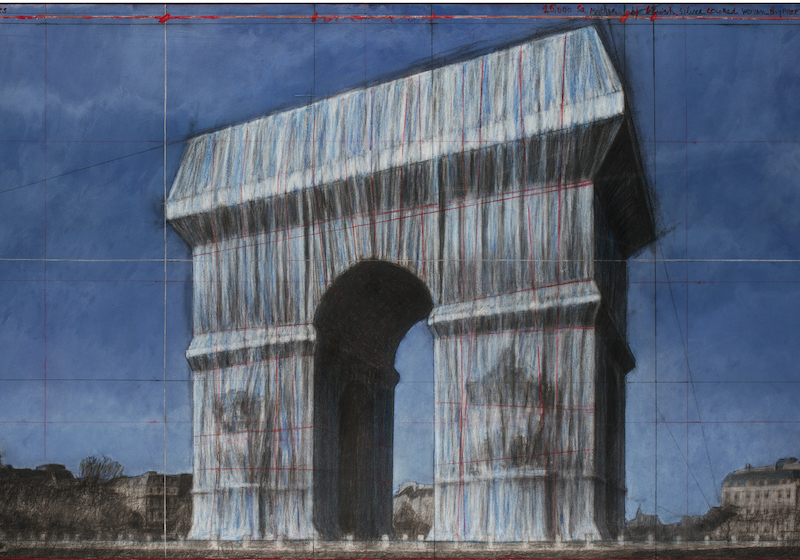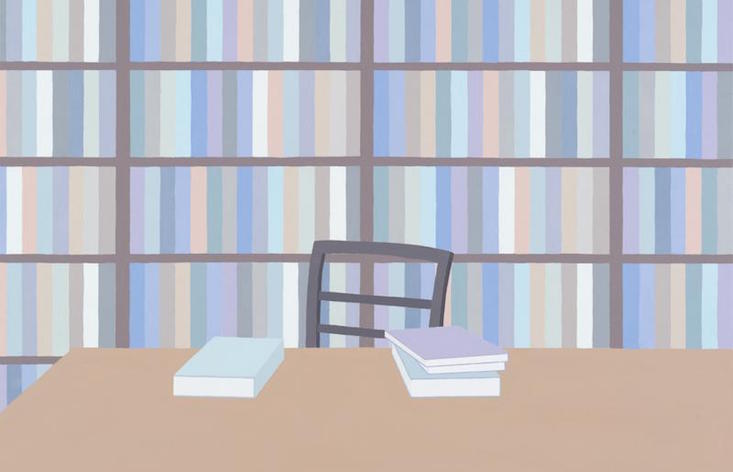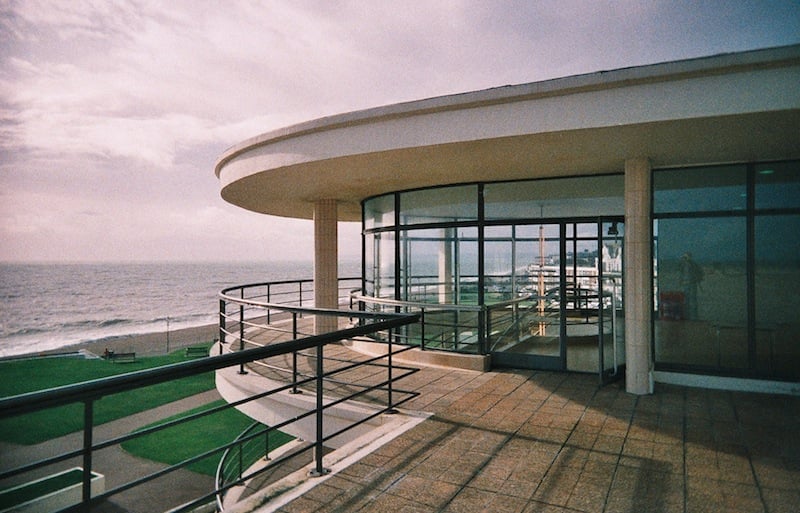France à la russe: a cosmopolitan guide to Russian Paris
For Russia’s 20th century intelligentsia, Paris has always been a home away from home, with artists and writers from Ivan Turgenev to Ilya Repin all finding respite in the City of Lights throughout some of Russia’s most difficult years.
Throughout the 19th and early 20th century, when the Russian aristocracy wanted to dazzle at parties or entertain at dinner, they spoke French. Many spoke it better than Russian. So when the 1917 revolution and following civil war left thousands from the former upper echelons fleeing the Soviet regime, Paris presented itself a natural home away from home. Some 958,000 people travelled from Russia on ships through Constantinople to Europe, and roughly a quarter were accepted as refugees in France.
The so-called Russes Blancs — or White Russians, in English — supported each other to build new lives in France. They often helped entire families move, opening several aid funds. But many wanted to return home. Some even did make their way back to Moscow and St Petersburg, but the lives they’d enjoyed before the revolution was not guaranteed. Returning to their homeland, all found themselves in a completely new country: many faced poverty, their apartments divided into communal flats and their possessions looted. Both the book Former People by Douglas Smith, as well as Russian-French film East/West describe their plight.
A second wave of Russian emigration to France then occurred in the early 1990s, after the collapse of the USSR. With tanks standing in the streets of Moscow and grocery shops left bare, many took advantage of their new-found freedom to search for a better life. Like the Russians that came before them, their emigration was the result of historical cataclysm, shattered expectations, and the end of an era.
But with a steady Russian presence for at least the last 100 years, Paris has become a true hub of the Russian community, boasting more than its fair share of Russian art galleries, restaurants, and shops to create a taste of Moscow or St Petersburg in the heart of France. The Calvert Journal tracked down the very best of Russian Paris to follow in the footsteps of the emigres who truly made the French capital their own.
The 8th and 16th arrondissements
The calm and genteel 8th and 16th districts to the west of Paris are traditionally considered to be the city’s Russian neighbourhoods. Russian immigrants settled here in the 19th century, not far from the Eiffel Tower, the Bois de Boulogne, and the Champs Elysées, largely to be close to the Alexandre Nevsky Cathedral. Still considered one of the main Orthodox churches in Paris, the cathedral was built under the reign of Russian Emperor Alexander II in 1861. The Russian diaspora now gathers here for Holy Saturday celebrations before the Orthodox Easter, where crowds wait to see their Easter cakes blessed and to let children paint brightly-coloured eggs.
The Russian Embassy building is also located here, although among the neighbourhood’s narrow streets, it almost seems to have been teleported from the Soviet past. This angular building, an example of cold dictatorial architecture, jars against the solemn and finely-detailed architecture of the 16th district, best known for the dainty buildings set by Paris’ Baron Haussmann in the 19th century.
If you go a little further towards the city centre and into the 8th district, you will see the most beautiful bridge of the city, Pont Alexandre III. Its “twin brother”, Trinity Bridge, can be found in St Petersburg. Nearby is also a monument to Russian soldiers sent to France to help the Allies during the First World War.
Walking along the Quai Branly, you’ll soon come to another important hub for the local diaspora: the Russian Cultural and Religious Centre. Designed by French architect Jean-Michel Willmotte, the building’s golden domes stand out against the backdrop of modernist waterfront buildings and symbolise the union of Russia and France.
If you want to eat nearby, head to the Pêle-Mêle café to try Russian dumplings known as pelmeni, or thin pancakes with caviar. If you still have room for more, then the Cantine Russe close to the Palais de Tokyo also has a spread of authentic food on offer. Make sure you try the ukha fish soup, which is similar in taste to Marseille’s famous bouillabaisse.
Le Zakouski RestaurantAddress: 127 Rue du Château
When it comes to Russian cuisine, people often think of heavy or high-fat food (and in many cases, they are absolutely right). More generally however, Russian and French cuisine are similar in more ways than one. Peter the Great invited French cooks for his court in his “European” capital of St Petersburg, and the aristocracy followed his example. The likes of Russia’s famous beef stroganoff were born from French beef recipes, with national mainstays such as omelettes, mousses, mashed potatoes, and meatballs also taking their cue from French cuisine.
The French, meanwhile, were gifted the word “bistrot” — the name given to small Parisian restaurants — from the Russian language. Legend says that Cossack soldiers who arrived in Paris in 1814 would shout the Russian word for “quickly” — “bistro! bistro!” — as they ordered food in a bid to be served faster. The word remained even as the soldiers left, quickly becoming synonymous with these original fast food cafes.
If you also want to get acquainted with Russian cuisine in Paris, you can’t go wrong with the Le Zakouski bistro. Decorated with red tones, traditional folk crafts, and a deluge of samovars, the interior décor may verge heavily onto the kitsch, but in a traditional ambience, the restaurant can compete with London’s famous Mari Vanna or New York’s Russian Samovar.
Here you can try a real rich-in-taste borsch with sour cream and homemade pies (pirozhki), and you can figure out how Russian pelmeni differ from Italian ravioli and Chinese dumplings. It is worth ordering the Russian version of meze, or snacks for vodka or any other aperitif: pickled gherkins and onions, dark rye bread, lard, herring. The traditional Russian feasts often begin with such starters. The restaurant is open only in the evening, so you should book a table in advance.
Ossip Zadkine Museum Address: 100 Rue d’Assas
Not far from the Luxembourg Gardens stands the modest house where sculptor Ossip Zadkine lived and worked. Born in Belarus, Zadkine moved to Paris in 1910 to start his studies at the Ecole des Beaux-Arts. Here in the heart of the French capital, he worked with the likes of Amedeo Modigliani, Pablo Picasso, Henri Matisse, and other regulars at La Rotonde cafe.
When it comes to Russian cuisine, people often think of heavy or high-fat food. But Russian and French cuisine are similar in more ways than one
Despite struggling to establish his reputation at home, Zadkine found great popularity in France, Europe, Japan, and the United States. While his exhibitions were held in grand venues across the globe, the artist himself lived almost his whole life in a cosy little house in the Saint-Germain-des-Prés neighbourhood.
More than 300 of Zadkine’s cubist drawings and sculptures are exhibited both in the building itself and its gardens. Entrance to the museum is free of charge, except for the temporary exhibitions.
Sacha Finkelsztajn CafeAddress: 27 Rue des Rosiers
In the aftermath of both the Holocaust and Stalin’s own anti-Semitic repressions, Soviet Jews were finally given widespread leave to make a new life in Israel or re-join their families across Europe in the 1970s. Few officials had imagined that so many would take the government up on their offer. Throughout the decade, more than 290,000 Jews left the USSR, with many opting to live in Europe, as well as Israel, Canada, and the United States.
Many came in Paris — and in the cosy historical quarter of Marais, you’ll find the Rue de Rosiers, where many Jewish families eventually set up shop. Although many of the local business are related to the Sephardic Jewish community, you’ll also find Sasha Finkelstein, a cafe and pastry shop filled with Jewish sweets and pastries from Eastern Europe — including Poland, the Czech Republic, Belarus, and Russia.
The cafe-confectionery was opened by a couple from Poland, Dora and Itzik Finkelstein, in 1946. Today, it is instead run by to their grandchildren, Dimitri, Natasha, and Laura. The cafe has always been crowded, and on weekends, visitors can even be seen queueing onto the street — but if you get the chance to get inside, then try the vatrouchka — lush buns with cottage cheese — fresh syrniki or Russian pirozhki — classic pies with beef, potatoes, or mushrooms. There’s also your chance to try excellent challah, German pretzels and Viennese strudel.
Ivan Turgenev’s Dacha Address: 16 Rue Yvan Tourgueneff
Russian writer Ivan Turgenev, like many other 19th-century nobles, lived an impressive part of his life in France — 38 years, to be precise. During this time, in the west-Parisian suburb of Bougival, the writer built an unusual house reminiscent of both a typical Russian dacha and a Swiss chalet. Russian translator Elena Ardov-Apreleva, who visited both Turgenev and his friend and lover, singer Pauline Viardot, described the house as “graceful as a toy, decorated with wooden carvings. The Swiss and Russian styles were successfully combined in the appearance of the writer’s summer shelter, and inside everything breathed strict simplicity and comfort.”
Other visitors over the 10 years that Turgenev lived in the house included Gustave Flaubert, Mikhail Saltykov-Shchedrin, Emil Zola, Alfons Dode, Vasily Vereshchagin and others.
Now transformed into a museum, the home’s interiors and furniture were restored according to the recollections of Viardo’s daughter, and ready to give a unique insight into the writer’s mind for any fan of his works.
Librairie du Globe Address: 67 Boulevard Beaumarchais
Five minutes from Place des Vosges on the spacious Beaumarchais Boulevard is the only Parisian bookshop devoted to Russian literature: Librairie du Globe.The interior of the store itself is reminiscent of an old writing house, surrounded by piles of books, new and old, in Russian, French, and English. They include the works of modern Russian writers such as Yevgeny Vodolazkin or Yuri Slezkin, which cannot be found in ordinary French bookshops. If you head inside, then don’t forget to head down to the basement of the store, where you’ll find a spacious room with a long wooden table, a poster by Nabokov’s Lolita and statuettes inspired by the scandalous Russian performance artist Pyotr Pavlensky. It often hosts meetings with writers, exhibitions, and parties that crowd inside the open bookshop in the evening.


